Surprising Facts
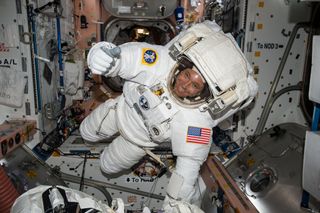
Being an astronaut is a tremendous commitment. Astronaut candidates — who tend to be selected in their 30s and 40s — usually leave prestigious careers for a chance at being an astronaut, starting again at the bottom of the rung. Training means long days at work and lots of travel. There’s also no guarantee they’ll make it into space.
Yet, more than 18,000 Americans competed in this round of NASA’s astronaut selection. The new candidates will be announced Wednesday (June 7), and will report for basic training in August. Here’s what it takes to be a NASA astronaut and what happens after the selection.
Astronaut requirements
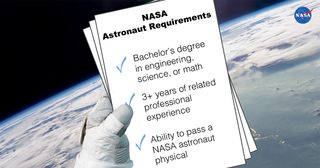
NASA has strict requirements for being an astronaut. The job not only needs you in top physical shape, but it also demands the technical skills to take on difficult jobs in a spacecraft or on a space station far from home.
The agency’s basic requirements are a bachelor’s degree in engineering, biological science, physical science, computer science or mathematics, followed by three years of professional experience (or 1,000 hours of pilot-in-command time in jet aircraft). Candidates also must pass NASA’s astronaut physical examination. However, there are many other skills that can be an asset to selection, such as scuba diving, wilderness experience, leadership experience and facility with other languages (especially Russian, which all astronauts are required to learn today.)
In this photo: These are the basic requirements for being a NASA astronaut, but selected candidates usually have much more experience.
What an astronaut “class” looks like
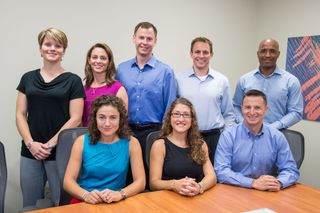
NASA has selected 22 “classes” of astronauts since the first group of seven astronauts in 1959 who were chosen for the Mercury program. The space program has grown and changed significantly since that time. The first few classes of astronauts were drawn largely from the military, especially test pilots — a group deemed ready to deal with the extreme dangers of space. But as NASA’s program evolved, more diverse skill sets were needed.
For example, the fourth class of astronauts (in 1969) was known as “The Scientists,” and included Harrison J. Schmitt, who was the only geologist to walk on the moon (during Apollo 17). Other notable classes include the eighth class in 1978 (including female, African-American and Asian-American selections), the 16th class in 1996 (the largest class, with 44 members selected for frequent space shuttle flights to build out the International Space Station) and the 21st class in 2013 (the first class with a 50/50 gender split. [Building the International Space Station (Photos)]
In this photo: The most recent group of NASA astronauts, shown above, was selected in 2013. It was the first class to be evenly split between male and female candidates.
The vehicles they will use
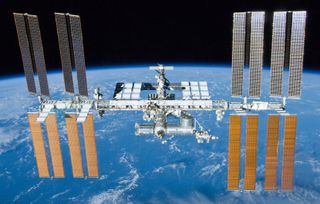
The new astronaut class has a large variety of vehicles to look forward to. Astronauts today use the Russian Soyuz spacecraft to reach the International Space Station, the main destination to test out long-duration spaceflight. In the coming years, however, NASA hopes to again move beyond low-Earth orbit for missions to the moon and Mars. If this comes to pass, the new class of astronauts will use the Orion spacecraft for deep-space exploration.
The new astronauts can also look forward to launching from American soil, once the new class of commercial vehicles is ready. Both SpaceX and Boeing are creating spacecraft for NASA’s commercial crew program, which is expected to get going in earnest by the end of the decade. It will be the first time Americans launch from the United States since the space shuttle program, which completed in 2011. [Orion Explained: NASA’s Multi-Purpose Crew Vehicle (Infographic)]
In this photo: The International Space Station
Where the new astronauts will go
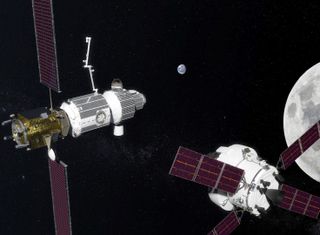
The new astronauts may begin their careers traveling to the International Space Station, or they may find themselves flying farther. It all depends on where United States space policy goes in the coming years, and what programs NASA finds itself involved in. The space station is scheduled to last until 2024, but could be extended until 2028 or even longer.
Other plans are more nebulous, but NASA has several ideas in mind. The agency is testing its Orion spacecraft, which is expected to make an uncrewed flight past the moon in 2019. (The agency considered putting astronauts on board, but decided not to due to the additional technical burden.) Orion would then carry humans to deep-space destinations in the 2020s and beyond.
Where next? NASA hopes to bring astronauts to Mars in the 2030s, if its current plan has support for that long. As a part of that, the agency recently announced a “deep-space gateway” space station near the moon that could help the astronauts train for deep-space missions, or prepare for a voyage to Mars.
In this photo: An artist’s conception of the “deep-space gateway” space station that could be used near the moon in the coming years.
What astronauts do (most of the time)
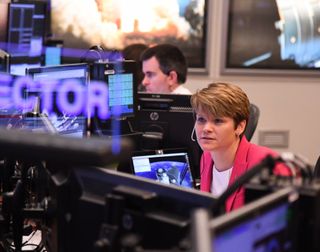
While the public mostly pays attention to astronauts while they’re in space, in reality the astronauts will spend only a fraction of their careers up high. Most of their time will be spent training and supporting other missions.
First, the astronaut candidates will have about two years of basic training, where they will learn survival training, language, technical skills and other things they need to be an astronaut. Upon graduating, new astronauts can be assigned to a space mission, or assigned to technical roles in the Astronaut Office at the Johnson Space Center in Houston. These roles can include supporting current missions or advising NASA engineers on how to develop future spacecraft.
In this photo: 2013 astronaut class member Anne McClain serves as CapCom (capsule communicator) with the International Space Station. This role has an astronaut on the ground communicating directly with the astronauts on the space station, relaying instructions from the rest of Mission Control.
What basic training looks like
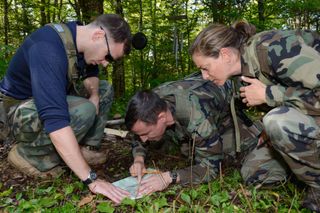
Astronaut candidates undergo an intense process before the newly selected class is certified as astronauts ready for flight. Among their many tasks will be learning how to spacewalk, how to do robotics, how to fly airplanes and how to operate on the International Space Station.
The astronaut candidates will fly NASA’s fleet of T-38s to gain piloting skills; practice for spacewalks at the Johnson Space Center’s 60-foot-deep swimming pool (called the Neutral Buoyancy Laboratory); catch simulated spacecraft using a practice version of the station’s robotic arm, Canadarm2; learn Russian; and get basic training on space-station operations. Astronauts also deepen their leadership and following skills through geology and survival training. [Space History Photo: Space Station Mock-up in Neutral Buoyancy Simulator]
In this photo: Members of the 2013 astronaut class engage in land-survival training.
Forging partnerships
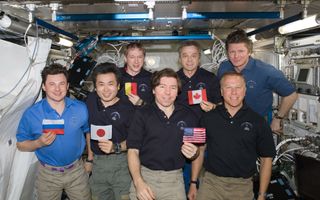
While the astronaut candidates selected by NASA will be principally working with that agency, they also will find themselves embedded in a network of international partnerships. Along with commercial partners in the United States developing spaceflight hardware and the various NASA centers that work in human spaceflight, there are 16 nations participating in the International Space Station — each with its own realm of expertise.
For example, Roscosmos (the Russian Federal Space Agency) operates several modules in the station and ferries astronauts to space using their Soyuz rocket. The Canadian Space Agency heavily participates in robotic operations, such as capturing cargo ships with the Canadarm2. Other major international partners include the European Space Agency (ESA) and the Japan Aerospace Exploration Agency (JAXA). Each of these agencies has its own astronauts working on the space station and in the Astronaut Office.
In this photo: Expedition 20 on the International Space Station had all major partner nations represented for the first time. From left to right: Russian Federal Space Agency (Roscosmos) cosmonaut Roman Romanenko; Japanese astronaut Koichi Wakata; European astronaut Frank De Winne; NASA astronaut Michael Barratt; Canadian Space Agency (CSA) astronaut Bob Thirsk; NASA astronaut Tim Kopra; and Russian cosmonaut Gennady Padalka.
Passing the selection process
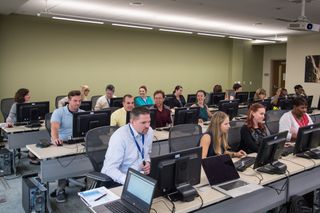
This round, a record 18,353 applications came in for just a handful of NASA spots. At first, human resources personnel reviewed each application to see if it met basic qualifications. Every application that qualified was then reviewed by a panel — the Astronaut Rating Panel. The rating panel is comprised of about 50 people, mostly current astronauts. The panel decided on a few hundred of the most highly qualified candidates, and then did reference checks on each candidate.
That step narrowed down the candidates to just 120 people. A smaller group, the Astronaut Selection Board, then called in these candidates for interviews and medical screening. After that, the top 50 candidates underwent a second round of interviews and more medical screenings. The final astronaut candidates will be selected from this group of 50 people.
In this photo: The Astronaut Application Review Team, including members from NASA’s human resources departments, reviews applications from astronaut hopefuls.
How astronaut candidates are notified
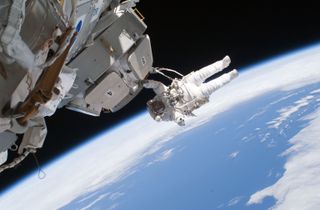
The lucky candidates who make the cut receive a phone call from the head of the Flight Operations Directorate at NASA’s Johnson Space Center, as well as the chief of the Astronaut Office. NASA asks the candidates to share the news only with their immediate family until NASA can make an official announcement.
NASA then typically holds a news conference to announce the new candidates, and invites journalists and those with social media accounts to ask questions of the new astronaut class. Then, the candidates are quickly plunged into training, giving them little time to talk with the outside world for several months at the least.
In this photo: A flight into space is the ultimate dream for an astronaut candidate.
Reporting for duty
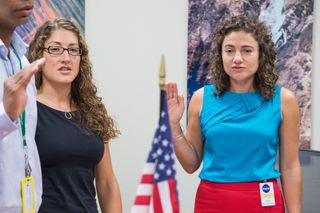
The new astronaut class will start work at the Johnson Space Center in August 2017 and be sworn into civil service. There will be a few weeks between when the astronauts are selected and when they move to Houston. In that time, they will end their current jobs and arrange to move with their families to Houston.
While being an astronaut is a prestigious job, candidates often leave flourishing careers to make the trip into space. However, in some cases they can use their time as astronauts to “level up” in other careers. For example, military astronauts can often have a joint assignment at NASA, allowing them to keep gaining in rank while performing missions and other astronaut duties. Or those in the sciences can try to choose missions and duties related to their past careers, letting them continue to publish scientific journal papers and take on other duties that lead to advancement in academia.
In this photo: Christina Hammock (left) and Jessica Meir, two members of the 2013 class of astronaut candidates, swear in NASA employees at the Johnson Space Center in August 2013.
Have a news tip, correction or comment? Let us know at community@space.com.
